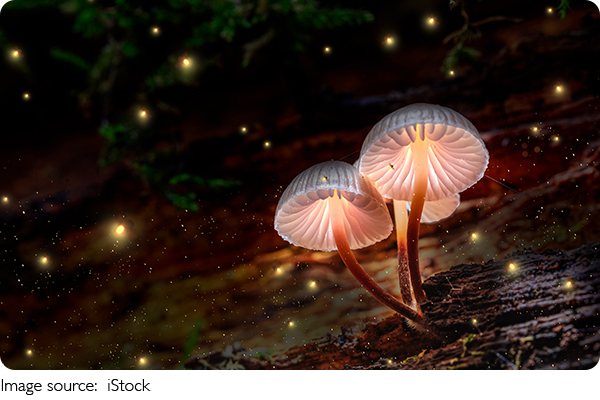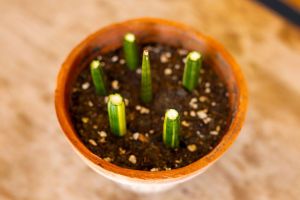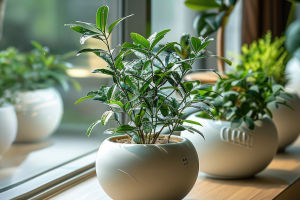Glowing Green Plants

Imagine walking through a dark forest and spotting a soft, greenish glow on a nearby log or leaf. No, it's not your eyes playing tricks on you—some plants and fungi can actually glow in the dark!
We're about to take a closer look at this magical phenomenon. Together, we'll discover how and why certain plants and fungi glow, and what scientists are learning from these natural lights. You may find yourself looking at nature a little differently after this!
What Is Bioluminescence?
The glowing effect seen in some living organisms is called bioluminescence. It happens when certain chemicals in a living thing react with oxygen to produce light.
In most cases, this glow is created by a molecule called luciferin, which reacts with the enzyme luciferase. The result? A soft, eerie glow that needs no external light source.
While we often think of glowing animals like fireflies or deep-sea creatures, bioluminescence also occurs in the plant world—mainly in fungi and some genetically engineered plants.
Glowing Fungi: Nature's Original Night Lights
One of the most common examples of natural plant-like bioluminescence comes from glowing fungi, also known as foxfire or fairy fire.
More than 80 species of fungi are known to produce light. These fungi usually grow on decaying wood and can often be found in forests around the world, especially in tropical and temperate regions.
Examples include:
• Mycena chlorophos, known for its brilliant green glow in Asia
• Armillaria mellea, a type of honey fungus that can glow faintly
• Omphalotus olearius, the Jack-O'-Lantern mushroom, which glows orange
Scientists believe the glow may serve several purposes—possibly attracting insects to help spread spores or acting as a warning signal to deter certain animals.
Plants That Glow: The Cutting Edge of Science
In the natural world, true bioluminescent plants are rare. Most glowing plants seen today have been created through scientific innovation.
In recent years, researchers have genetically engineered several plant species—such as petunia and watercress—to emit light. They achieved this by adding genes from glowing fungi or bacteria into the plant's DNA.
According to a study published in Nature Biotechnology, these engineered plants can glow continuously for weeks without harming the plant itself. The ultimate goal? To create natural, sustainable lighting for everything from gardens to city streets!
Why Does This Matter?
Experts like Dr. Alexander Krichevsky, a plant biotechnologist, see glowing plants as more than just a scientific curiosity. "We're exploring ways to use bioluminescent plants for practical purposes," says Dr. Krichevsky.
Possible applications include:
• Eco-friendly lighting for public spaces
• Living indicators to monitor plant health and stress
• Artistic uses in architecture and design
• Educational tools to engage students with science and nature
As this technology advances, we may one day replace certain artificial lights with beautiful, living plants that softly glow in the night.
How You Can Experience It
If you're curious to see glowing fungi or plants yourself, here are some tips:
• Visit a forest after dark—especially in tropical areas or places known for bioluminescent fungi
• Check botanical gardens—some may showcase glowing plants in special exhibits
• Follow scientific news—glowing plant seeds may become commercially available in the near future
Remember, if you do spot glowing fungi in the wild, observe them gently without disturbing their habitat.
The Wonder of Living Light
The ability of certain plants and fungi to glow is one of nature's most enchanting secrets. It reminds us that even in the dark, life finds a way to shine.
Next time you're out in nature, take a moment to imagine the unseen magic all around us. Who knows—you might just spot a real-life green night light!
Have you ever seen glowing fungi or plants in person? If so, tell us about your experience! And if not, would you like to? Let's keep exploring the wonders of nature together! 🌿✨💡


